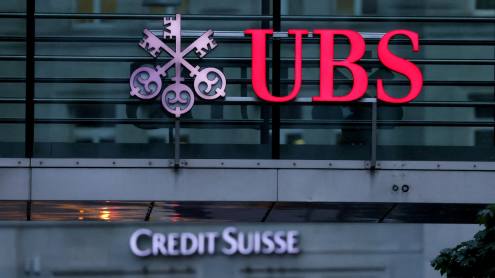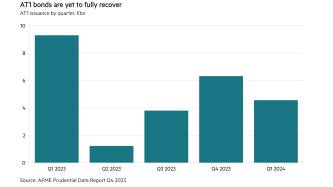If Austria’s companies have made the most of the growth opportunities presented during the past decade or so, then one of the clearest measures of that is in the performance of the Vienna Stock Exchange (VSE).
Although the VSE is still a relative minnow by global standards, it has charted an impressive performance in the past five years, increasing its total market capitalisation by 235% and rising by more than 270% in its key index, the ATX. Turnover of domestic shares has rocketed by 770%.
The VSE has also internationalised: more than half of its members are overseas and by the end of 2007, they accounted for about 70% of trading volume, up from 16% at the end of 2002.
“The only big international firm that is not a member of the exchange is Citi and we are already in talks to get them signed up,” says Dr Michael Buhl, co-CEO of the VSE.
The exchange has pursued a quiet but determined path, following Austrian corporates into central and eastern Europe (CEE) and the Commonwealth of Independent States (CIS), and making deals with the region’s other exchanges.
In 2004, it acquired a stake in the Budapest Stock Exchange (BSE) with an Austrian bank consortium; by the following year, it was disseminating BSE exchange data. In the coming weeks, the exchange will enlarge its stake in the BSE – from 12.5% to 37.7% subject to regulatory approval – taking the total share of the Austrian consortium to 68.8%.
In 2007, it signed a data dissemination deal with the Bucharest Stock Exchange, so that customers who receive data from the VSE and the BSE can also receive data from the Bucharest Exchange via their existing data feed. In April 2008, Sarajevo Stock Exchange signed up and in May, Banja Luca was the latest to sign such a data distribution deal.
The strategy puts Vienna at the heart of the region and positions the VSE as a key index developer and data distributor. The exchange now has a family of 33 indices, of which 23 replicate the developments of CEE: by country, region and by sector.
“More than 80% of structured products worldwide relating to eastern Europe are based on indices created by the VSE,” says Dr Buhl.
Two-pronged strategy
The VSE’s long-term strategy is twofold. The first involves co-operation, such as the data dissemination agreements that both strengthen the VSE’s role in the region and enable a partner exchange to distribute data via the VSE’s 120 data vendors. The second involves direct investment – such as that in the BSE – and even the creation of a merged regional hub (although Dr Buhl says that is a “very long way down the road”).
Direct investment became more difficult as local economies grew. As small domestic exchanges experienced growing trading volumes, the pressure to partner with another exchange to build liquidity receded. Politics also intervened; as governments changed, exchange privatisation plans – such as those in Poland and Slovakia – were often shelved.
Although Poland’s current government has put at least partial privatisation back on the map (the government will retain a controlling share) it is not looking for a strategic buyer. It is expected that the first tranche of shares (24%) will be offered only to financial investors. Market participants say that Poland intends to fulfil its own ambitions to be a regional hub by leveraging its vibrant new issue (if relatively illiquid) market and growing pension fund sector.
However, the recent crisis may have put such deals back on the agenda at other exchanges. In January, as investors rushed to get out of their positions – particularly the less liquid stocks of smaller exchanges (the VSE itself experienced a lot of volatility) – several exchanges were hit by huge surges in volume and trading systems went down.
“It highlighted the fact that, at some exchanges, systems are out of date and will have to be replaced. This comes at a time when earnings are down, so for some there is once more pressure to look for a partner,” says Dr Buhl.
One such exchange is Ljubljana in Slovenia. VSE has just clinched 81.01% share, beating the Athens Stock Exchange in the second round of bidding. Dr Buhl says that its long-term strategy and its strength in the region made the VSE the most natural partner for the exchange and Slovenian market participants.
“We had some very compelling arguments, such as belonging to the same economic region, trade links and other ties to the rest of the region, as well as a good track record in CEE/SEE [south-eastern Europe],” says Dr Buhl.
Other exchanges that were hit, including Bulgaria’s Sofia Stock Exchange, want to replace their system with Deutsche Borse’s Xetra platform, the same system that the VSE uses. This could be a positive factor if Sofia comes up for sale later on, Dr Buhl believes. “There may be some shareholders who would like to sell now but get 2007 valuations; that would be a good play for the seller. If the exchange had good enough strategic potential, then maybe a buyer would be willing to pay such a premium,” he says.
Foundations of recovery
Despite the financial turmoil, Dr Buhl says that he is positive. There may not be the 50% to100% volume growth year on year that the VSE has experienced recently, but the foundations are there for a good recovery. “Austrian order books are full, GDP [gross domestic product] growth is good and the CEE has great growth potential.”
He is a little more cautious about attracting new issues. “We had a few postponed between the end of last year and February, but I think they will come to market in the second half of the year. It is a crisis of confidence and companies are waiting for an ‘ice-breaker’. The Vienna Insurance Group rights issue [in March] and the Strabag placement [last October, Austria’s largest initial public offering to date] show that if you have the right story, you can do business even at the height of the crisis.”











